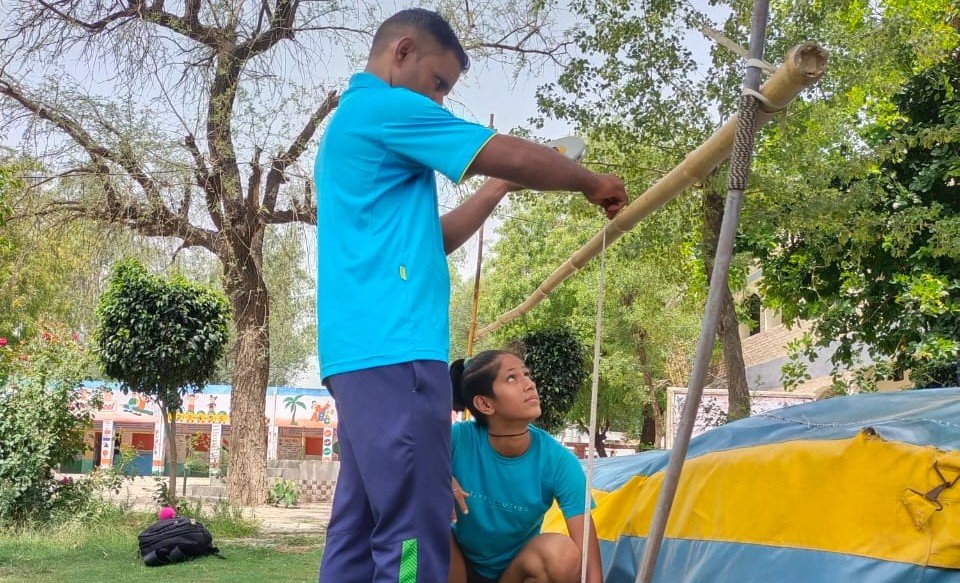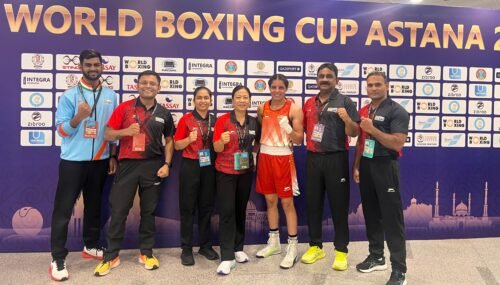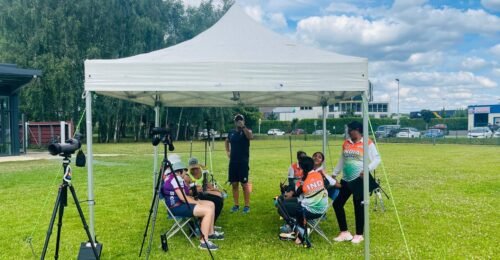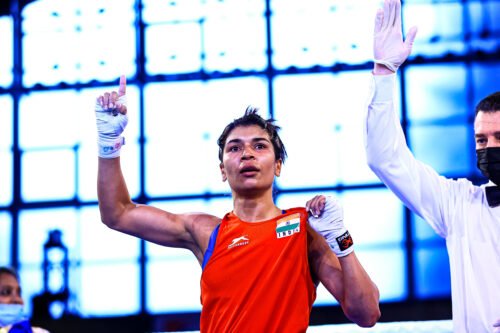High jumper Pooja Singh’s struggle shows even a state like Haryana lack in good facilities at grassroots level

Navneet Singh
India’s promising teenage high jumper Pooja Singh has highlighted the lack of proper infrastructure at the grassroots level. On
Friday, the 18-year-old Pooja emerged as a bright prospect for India as she cleared the bar 1.89m to win gold medal at the Asian Athletics Championships in Gumi, South Korea. It was also her personal best and U18 national record.
Pooja has come a long way since she dreamt of representing India and overcame challenges that came her way. Hailing from a village in Haryana’s Fatehabad district, Pooja had to go through lot of struggles in her initial years. “During my formative years of training in Haryana, I had to struggle as there was no high jump pit in my area,” Pooja revealed during media interaction after winning gold in South Korea.
As there was no jumping pit, she had to practise on a bundle of bales of hay. Ample support from her parents and encouragement from academy coach enabled her to post national records in age group categories. She holds national under16 as well under20 records in high jump. She started with scissors style and then moved to Fosbury style as she grew up and got better facilities at the SAI (Sports Authority of India) complex.
In Fosbury style, the jumper lands on the back after clearing the bar. Young athletes across Europe and the USA have access to good infrastructure and will certainly have an edge when the competition is neck-and-neck for athletes, who in their formative years practise on indigenous equipment.
“When I started high jump in 2019, we did not have a landing pit and I practised on sacks filled with parali (rice hay). For 2-3 years I trained like that before my coach arranged an old mat. I broke the U-16 record practising on it.”
Pooja’s rise to fame also highlights there is abundance of talent in the country, but the thrust of the scouting system is not there.
“Because of lack of resources we had to find innovative ways to train her. For a long time I trained her in sacks stuffed with rice stubbles. Then I managed to get an old mat but that too was in bad shape so I used thermocol sheets. There was no proper high jump bar and I used bamboo poles to set up the height,” Pooja’s coach Balwan Singh told sportsbackstory.com
Lack of infrastructure and weak scouting system need to be strengthened as early as possible at the grassroots level as India is keen on hosting the 2036 Olympics. Indian delegates, including IOA (Indian Olympic Association) president PT Usha will travel to two countries in Europe in June to strongly express India’s interest in hosting the 2030 Commonwealth Games and 2036 Olympic Games.
Country’s sports administrators or those involved in formulating sports policies shouldn’t neglect laying a solid foundation at the grassroots level to churn out potential athletes that are likely to excel at the above two multi-discipline games.
Do we have budding athletes with raw talent in the 10 to 12 age who can lead India’s charge at the 2036 Olympic Games?
The performance graph of Indian athletes at three successive Olympic Games starting 2016 shows that barring one of two, most elite athletes are inconsistent. This despite extensive international exposure.
India might get hosting rights for the 2030 Commonwealth Games. So, it’s time to send a group of experts with an eye to scout youngsters in each and every corner of the country to improve India’s medal tally in future games. The experts in the field of sports should also identify pockets at the grassroots level that need good infrastructure to ensure budding athletes have access to modern facilities to polish their skills at the development stage.



